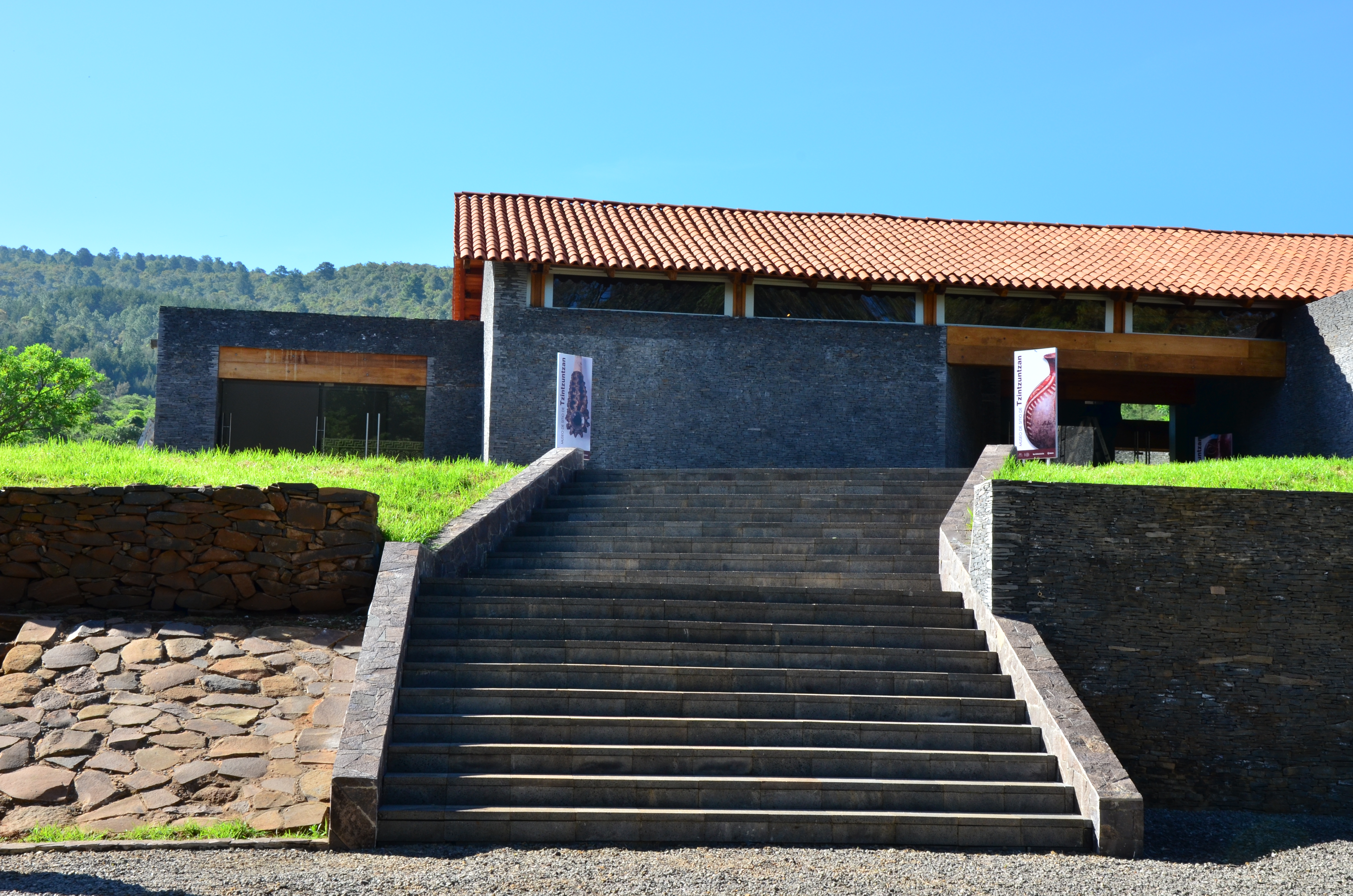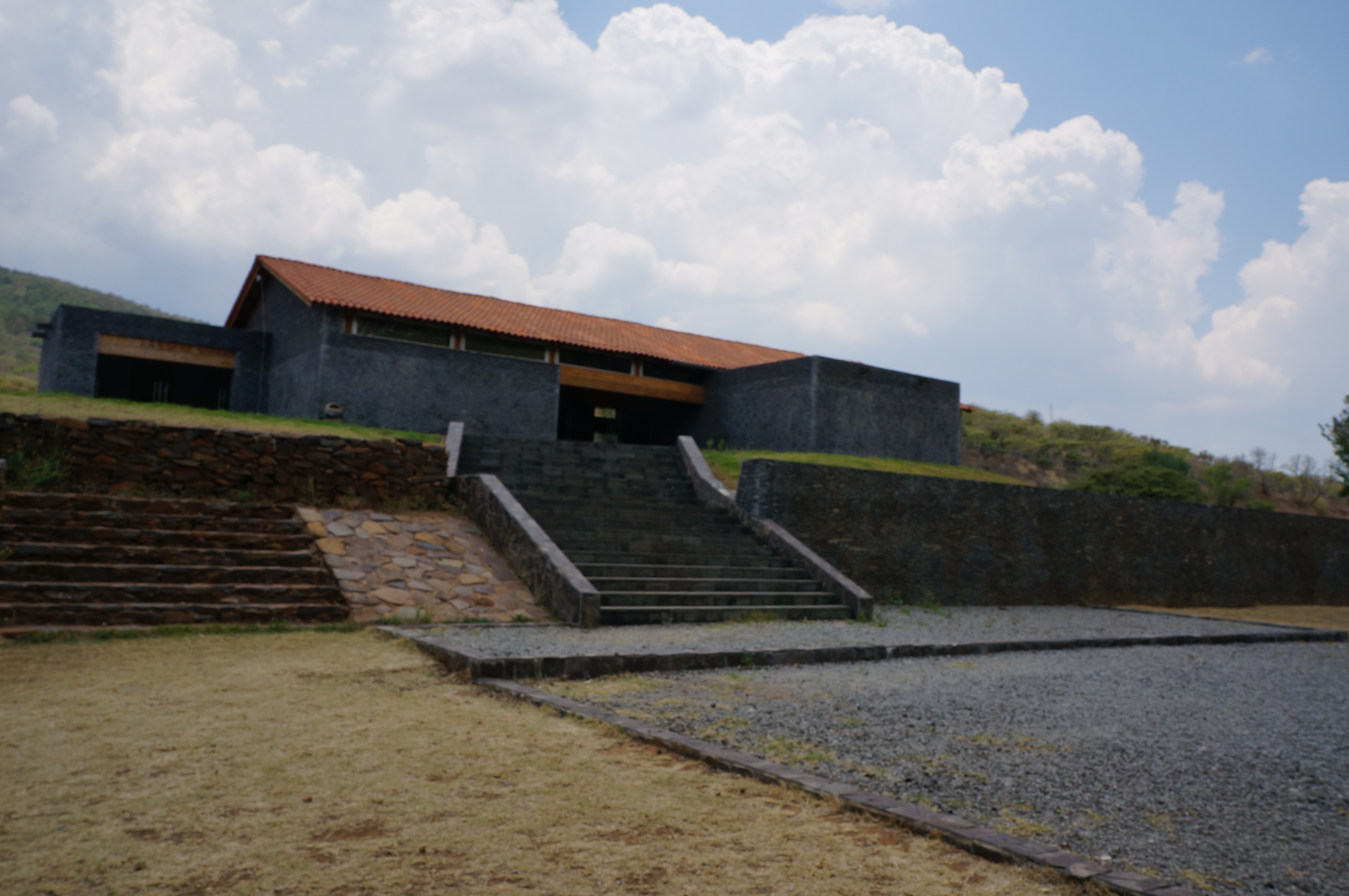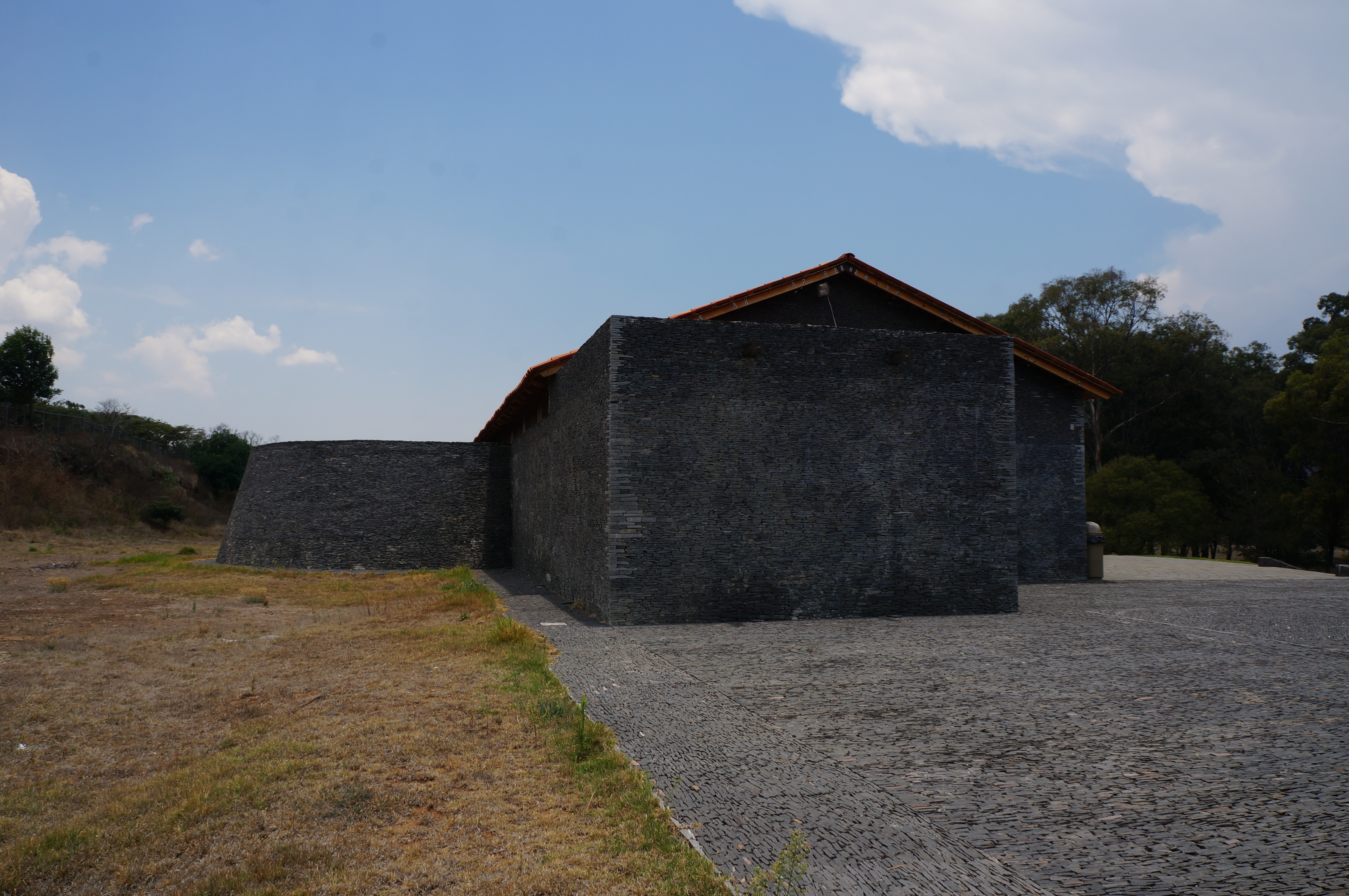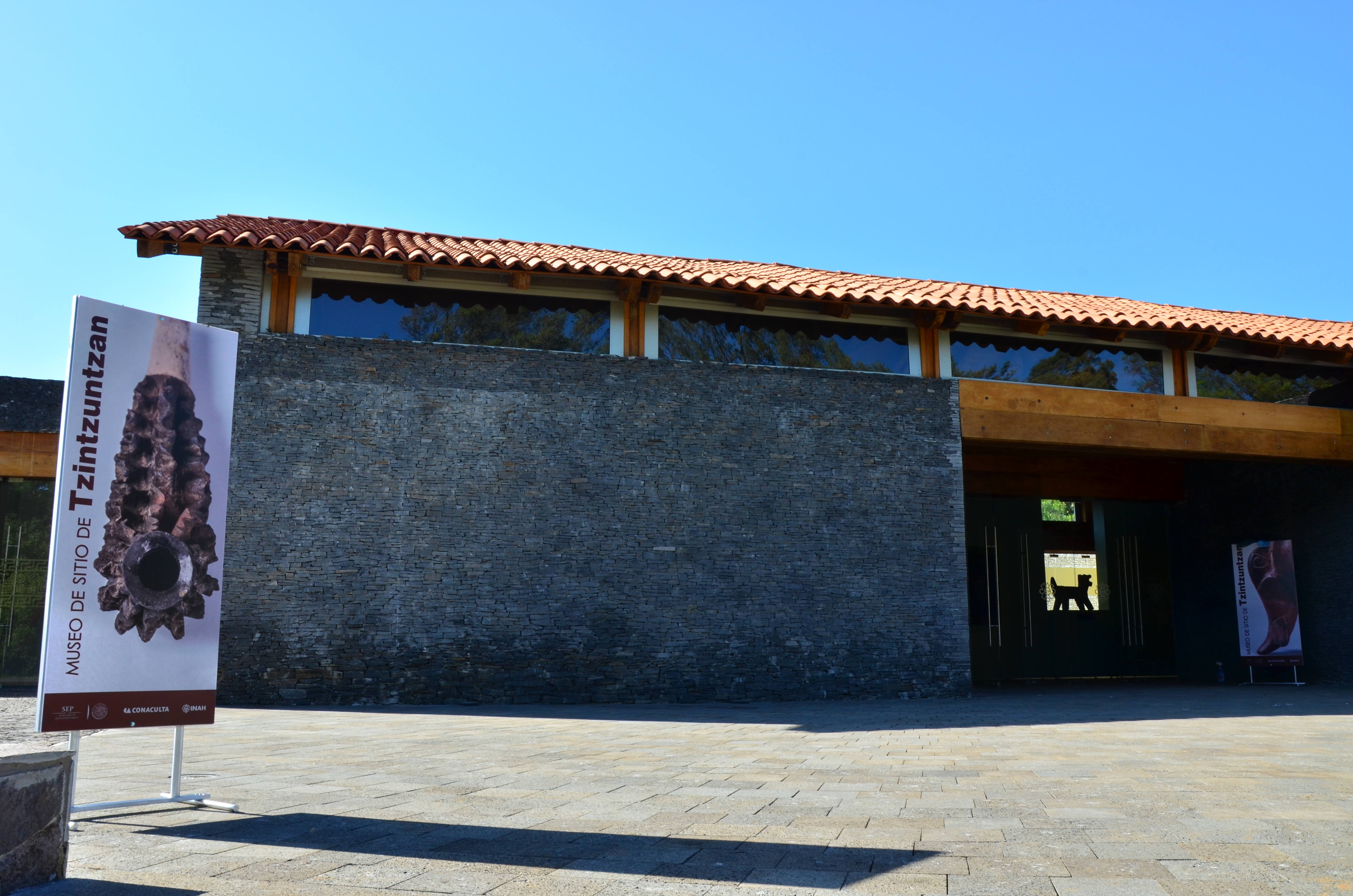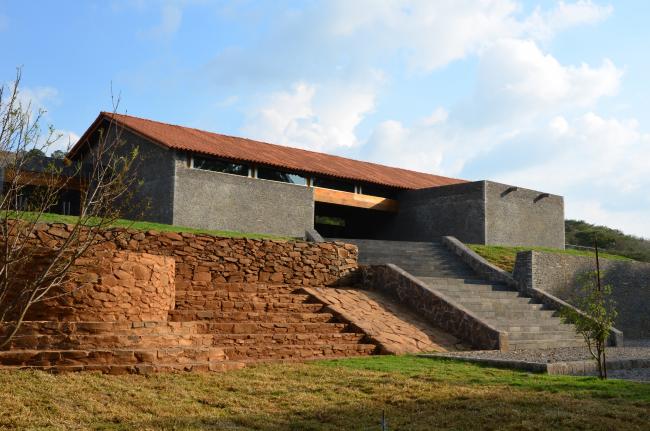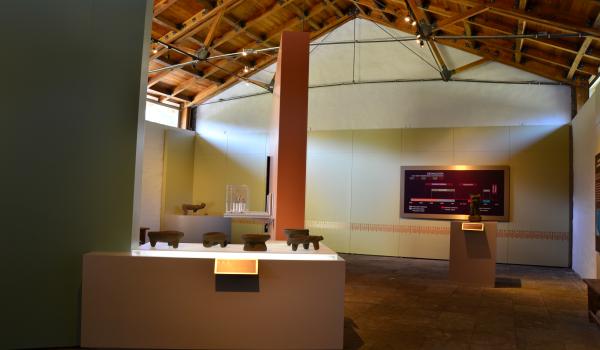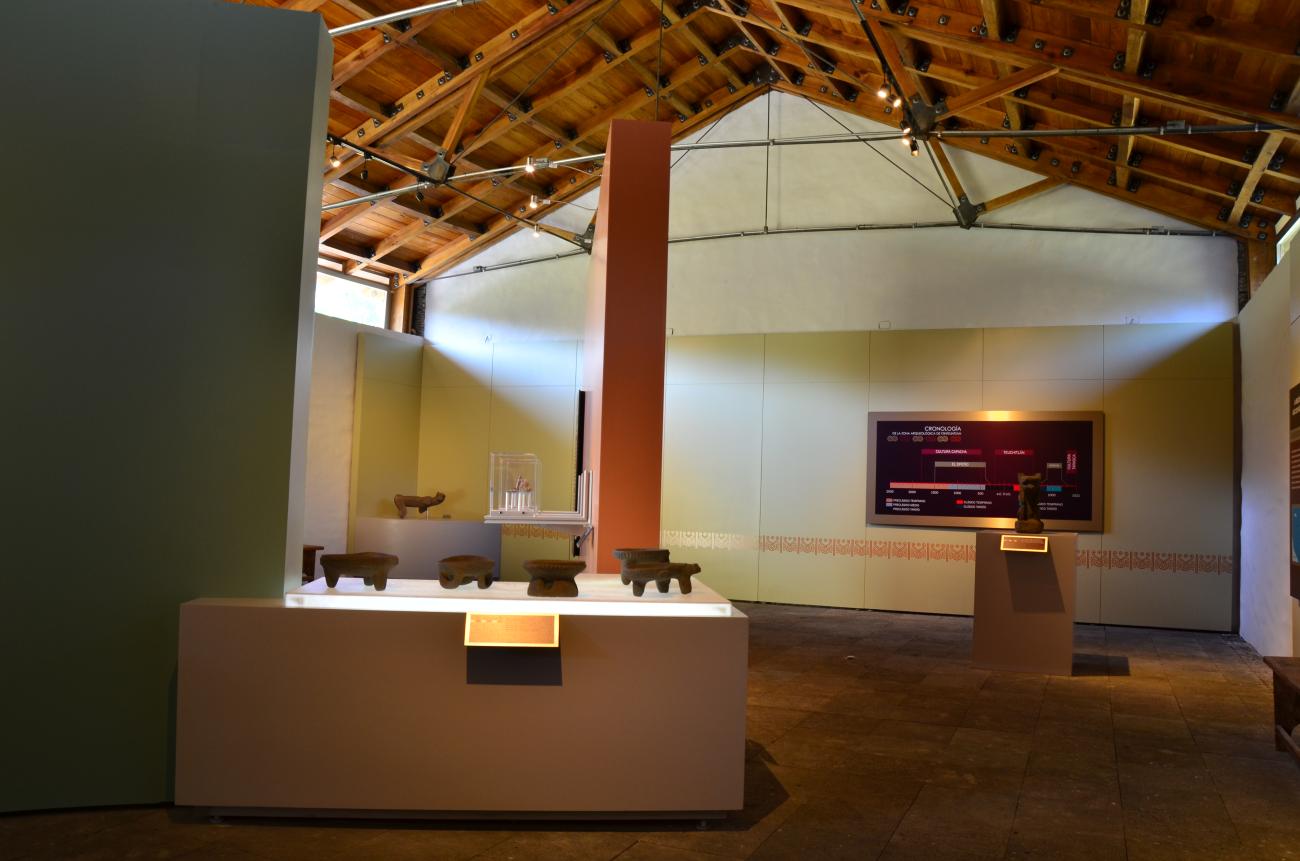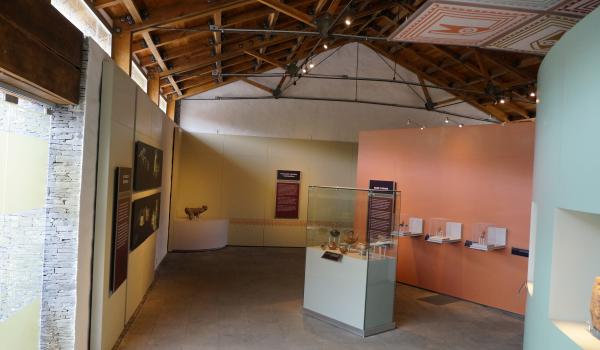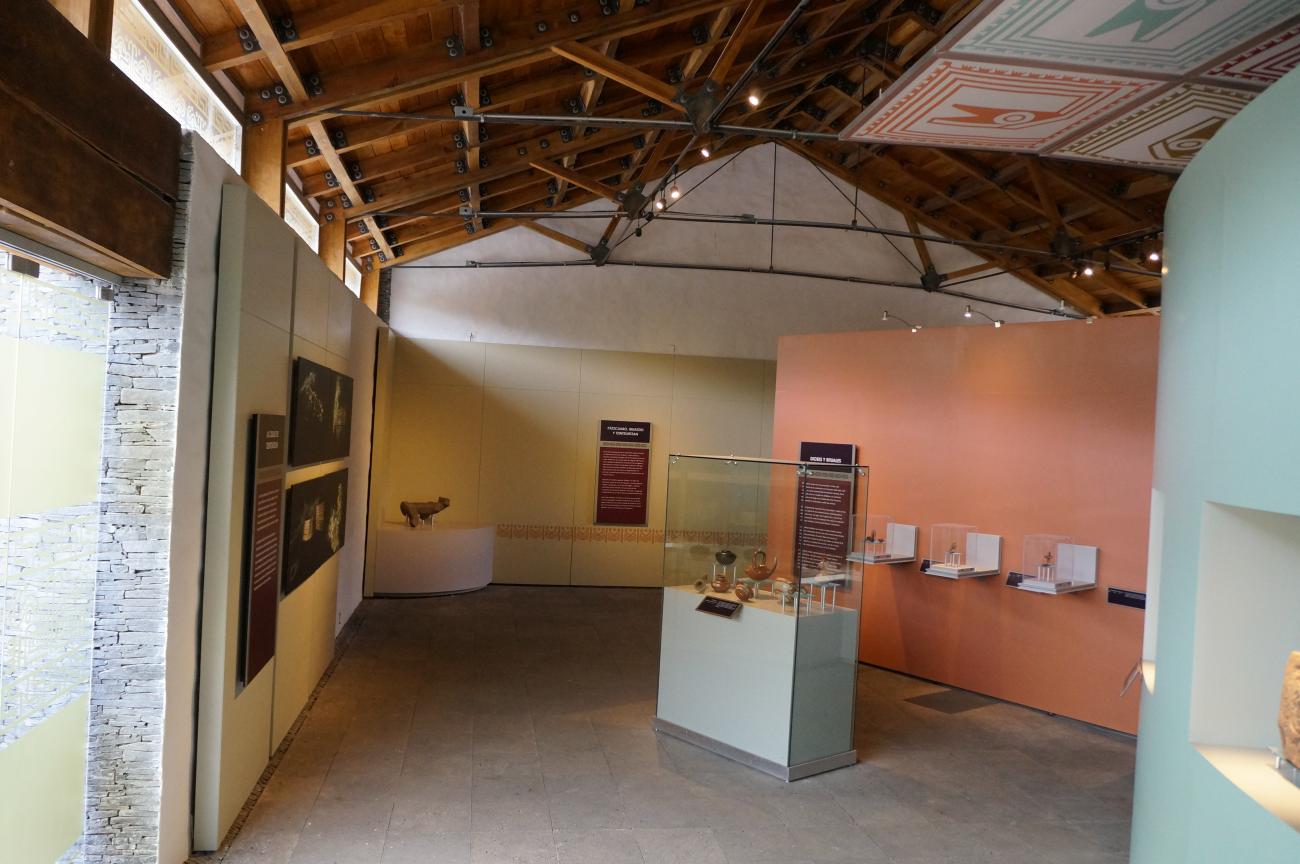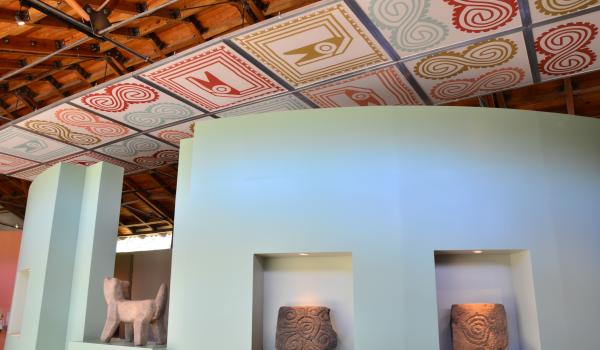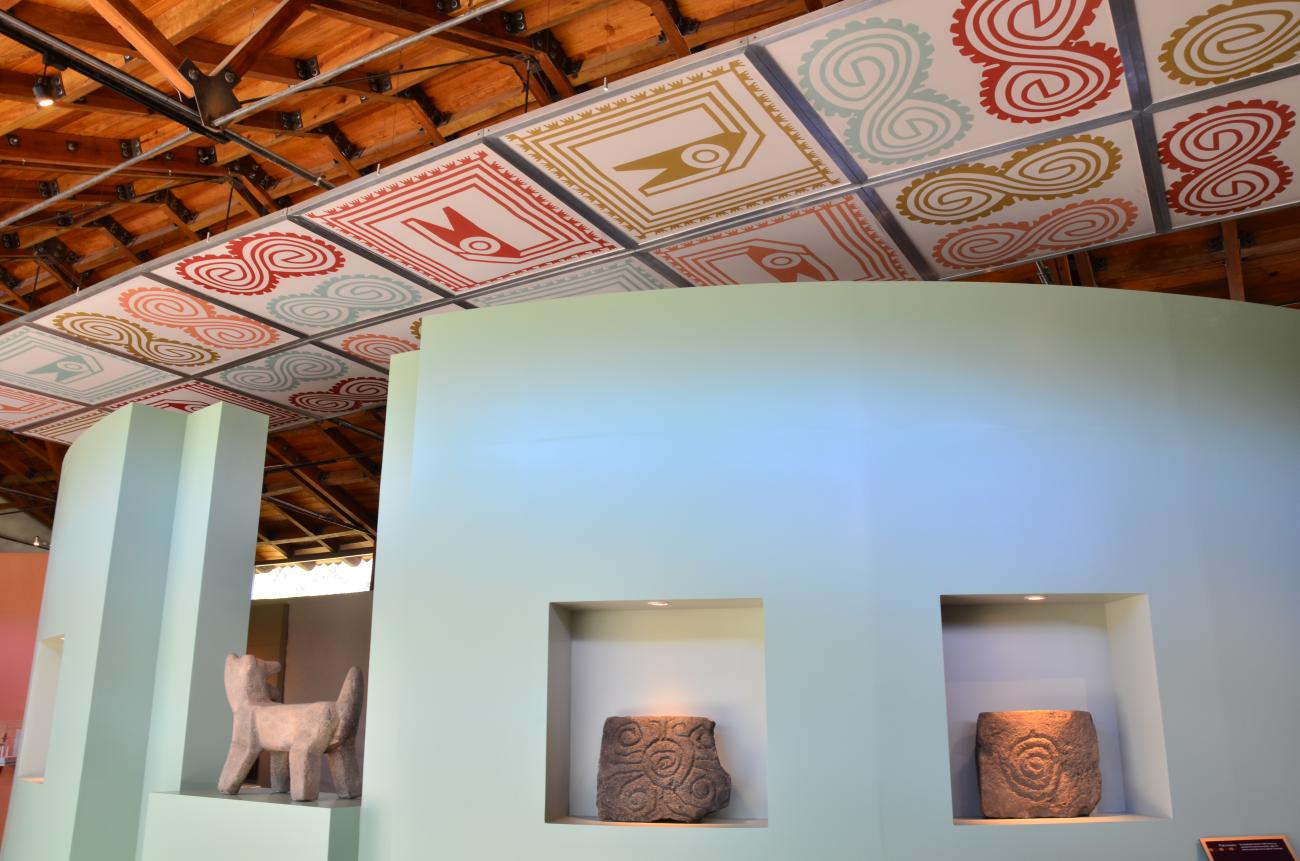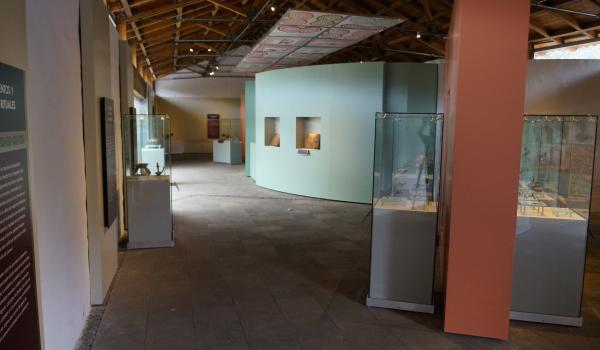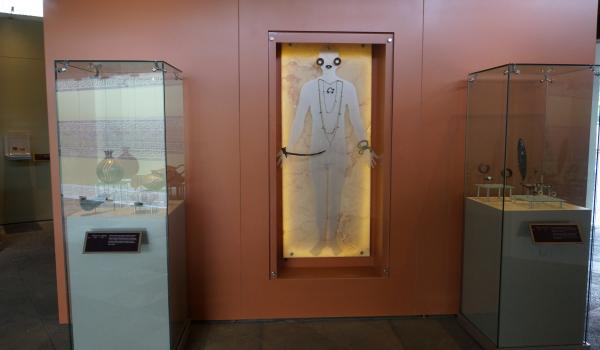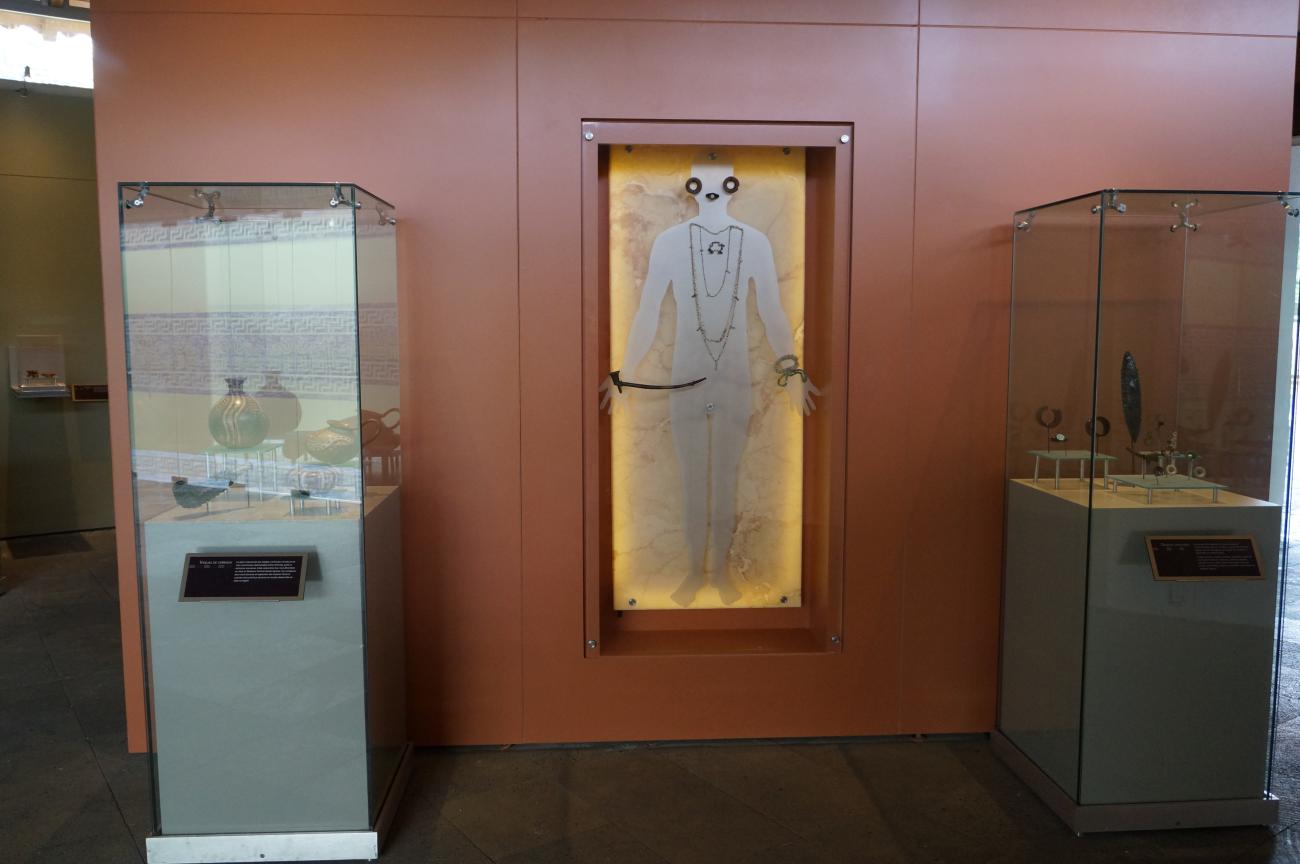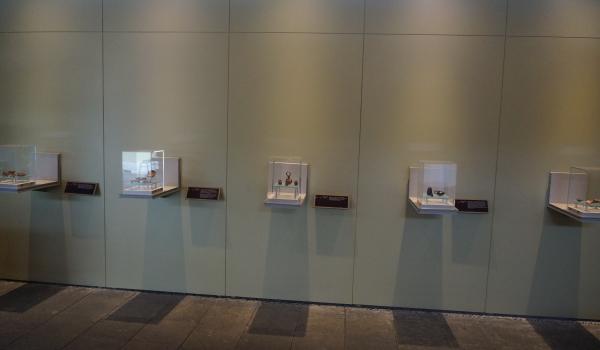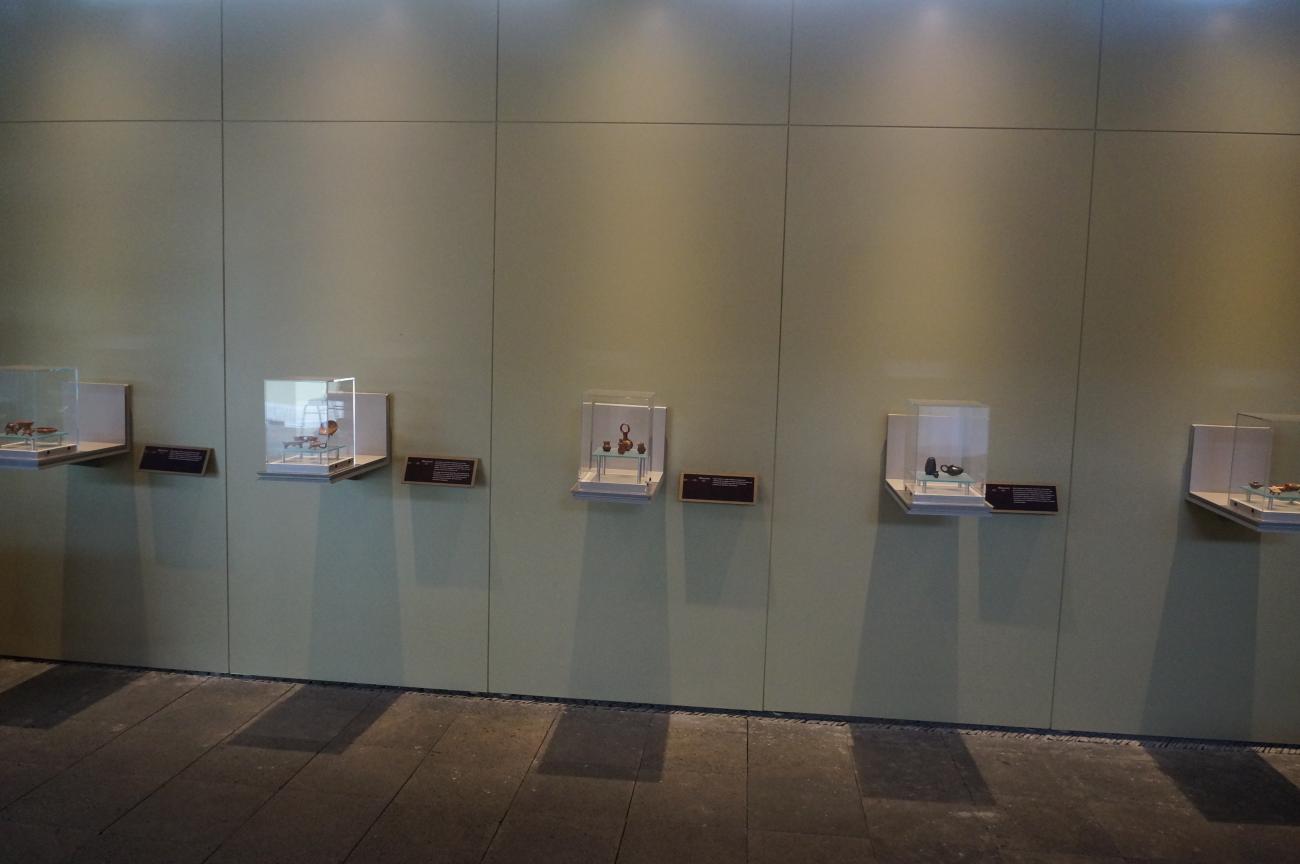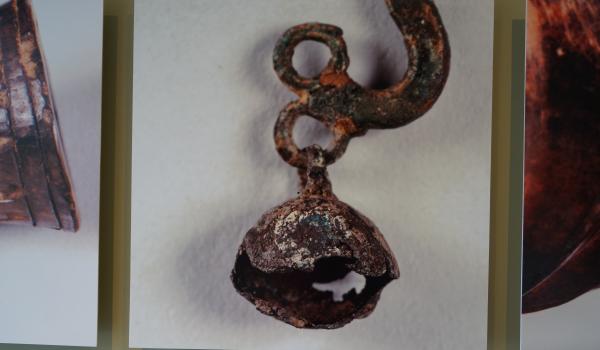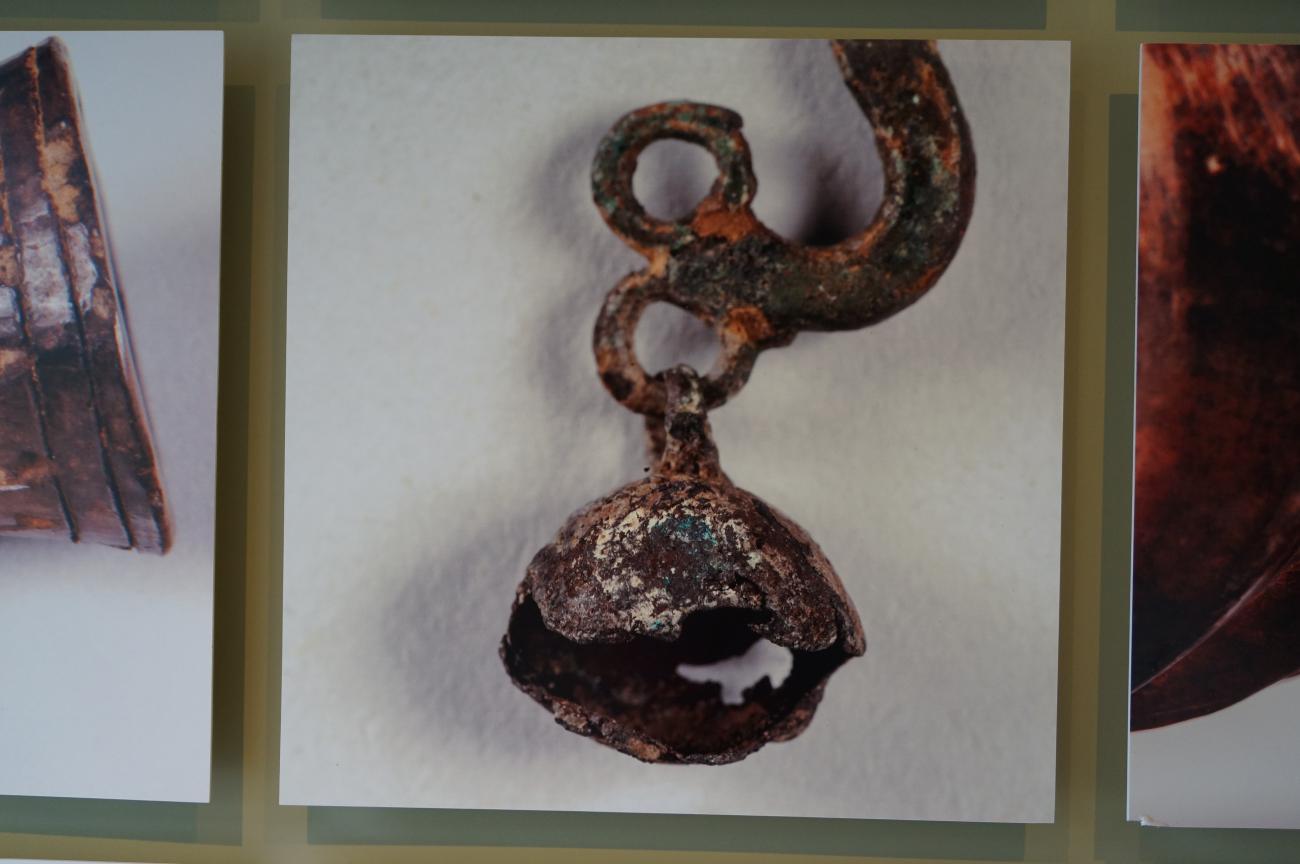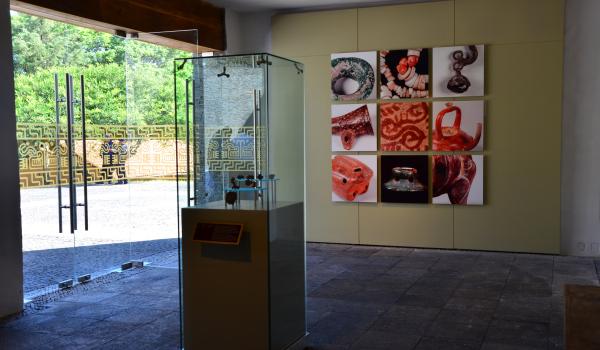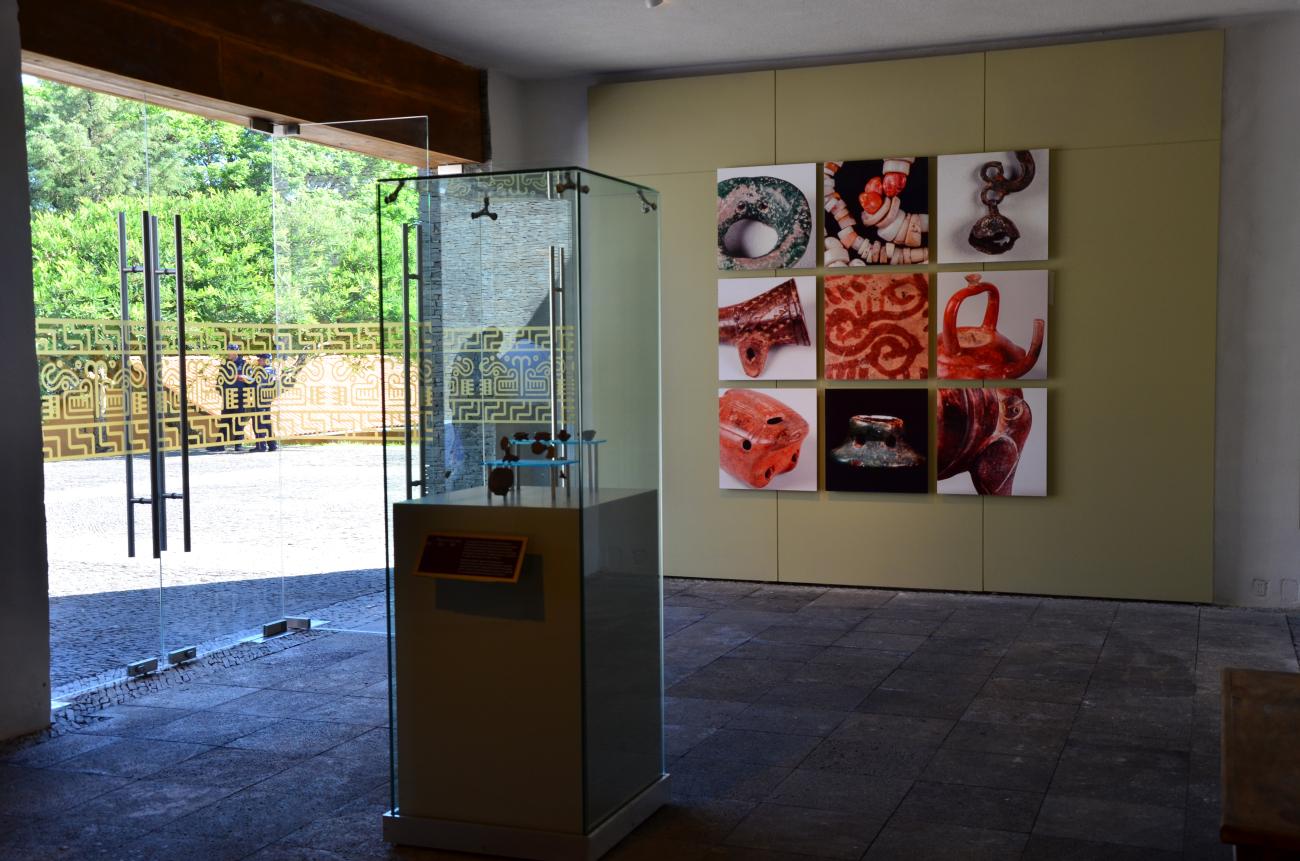Despite the fact that the archeological site of Tzintzuntzan has been excavated since the nineteenth century, and quite intensively in the twentieth century, it was not until 1992 that a small introductory gallery to the site displaying a few pieces was built through joint efforts prompted by the archeologist Efraín Cárdenas. This was the first site museum at Tzintzuntzan and it was located at the northeast corner of the Great Platform.
Over the next 20 years there were several efforts to extend and improve this small museum until 2012 when a plan was prepared for a new exhibition space just a few yards away from the old one. This was a Michoacan Special Project, managed by the archeologist Olga Lidia Landa. The building was constructed on the property known as La Tira and it was designed by the architects Salvador Aceves and Saúl Alcántara, who were inspired by the forms and lines of the yacatas, multi-level structures with several circular-plan temples on top of a great rectangular plinth. The new space resulting from this work was opened, but for various reasons it was not possible to complete the proposed exhibition.
A new and more complete exhibition was opened in 2014 thanks to the impulse of the Michoacan INAH Center and the INAH's National Museums and Exhibitions Office. The original desire was to extend the scope beyond the archeological site and this has now been satisfied with a portrayal of the complex social panorama of the Tarascan state and an interesting case study of the early viceregal period. The aim was also to incorporate all the previously built spaces on the archeological site. The old site museum became an audio-visual room introducing the history of the archeological site, while the new building employs attractive displays to highlight some of the most important archeological finds from the Tarascan era, and an audio-visual room is used to provide complementary information on the complex stratification of Tarascan society at the end of the pre-Hispanic period. Meanwhile the old cabin built in the first half of the twentieth century beside Yacata 5 was renovated in 2015 so that one of its areas could be used as a temporary exhibition gallery. This has already displayed various excavation and research projects from Tzintzuntzan and other sites in the state of Michoacan.
Today visitors can see ceramic pieces such as patojos (foot-shaped receptacles), tripod vessels and stirrup-handled pots with spouts, all of which are typical of Tarascan culture. There are also axes, hatchets, needles, rattles and ornaments made from bronze (an alloy of copper and tin), labrets, polished obsidian ear flares (some with embedded turquoise), stone points and knives, other stone artifacts and rock carvings. All these materials give a general picture of the culture of the upper strata of Tarascan society and we can understand them as part of everyday life, rituals, religious practices and crafts when examined in conjunction with various pages of La Relación de Michoacán ("An Account of Michoacan"). The tour concludes with the end of the empire and the arrival of the Spanish, a period which is represented through contemporary objects, and we can get a glimpse of the part of the sixteenth century when both groups lived in this ancient city.
All the material exhibited in this museum, as well as the interpretation, is continually updated in the light of new discoveries coming from the various archeological projects which are presently being carried out in the Tarascan region. The dissemination of archeological research is a dynamic and continually evolving process.







